Read about the 46 best Shrubs for Shade and sum up more colors in your garden and containers with bright flowers and beautiful foliage, even in the shade!
Shrubs are one of the alternatives to your favorite trees, have many uses in landscaping, and can make an excellent focal point in your garden. The most significant advantage being they can also keep flourishing in a shady spot! So, if your garden doesn’t get much sunlight, here are some of the best Shrubs for Shade that you can multiply!
Check out the best shrubs for growing in containers here.
Shrubs for Shade
1. Azalea
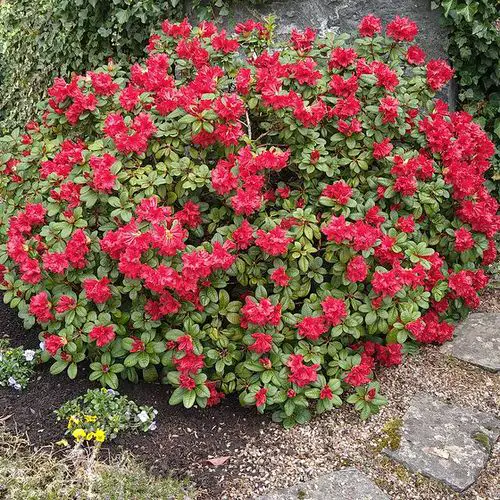
Botanical Name: Rhododendron
USDA Zone: 4-9
Azaleas belong to the Rhododendron genus. Most North American species have flower colors ranging from white to purple, pink, red, orange, and yellow. They survive under adequate rainfall and moist summer. Grow this one of the best Shrubs for Shade under loose, moist, and well-drained soil.
2. Hydrangea
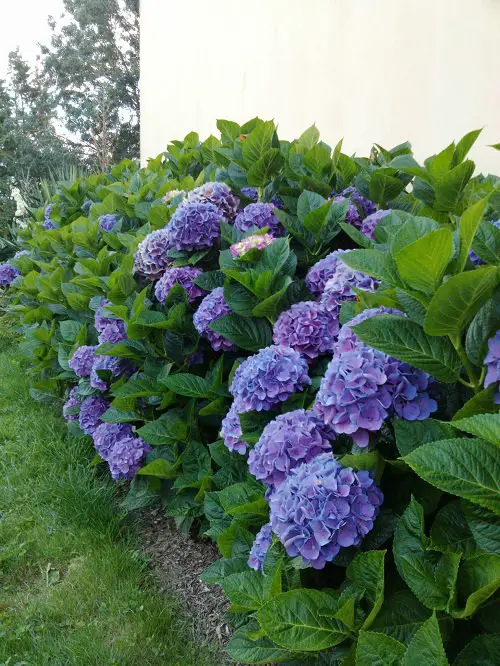
Botanical Name: Hydrangea
USDA Zone: 3-9
Known for changing its color from pink to blue, Hydrangea is one of the best flowering shade-loving shrubs. It flowers in warm temperatures during spring and summer. Hydrangea can be planted in spring once the threat of frost has passed in rich, well-draining soil. Cover your plant with Bark Mulch, Pine needles, or straw in the fall.
Note: Acidic soils with a pH of less than 5.5 produces blue flowers, whereas soil with a pH value more excellent than 6 has Pink flowers.
Check out our article on landscaping using Hydrangeas here!
3. Hostas

Botanical Name: Hosta spp
USDA Zone: 3-9
Hostas are cold-weather shrubs known for being the most adaptable. The plant bears tall spikes like white or lavender flowers in midsummers. The foliage varies from blue-gray to green. It needs to be watered in dry spells, especially during growing.
To learn how to grow hostas better using Epsom salt, click here!
4. Camellia

Botanical Name: Camellia sasanqua
USDA Zone:7-9
Camellia is one of the best shrubs for shade, producing evergreen foliage equally beautiful in copper bronze to deep green. Thanks to the new breeds, many Camellias have survived in colder American Gardens. They prefer light shade and slightly acidic soil. In colder areas, wind protection and winter shade will help reduce the damage to them.
Check out the best shrubs for growing in containers here
5. Allspice Michelia

Botanical Name: Michelia x foggii ‘Allspice’
USDA Zone: 10-11
These shrubs are from the Magnolia family and are native to subtropical and tropical regions. Thanks to the creamy white blossoms with a fantastic fragrance, it makes for an exceptional background plant.
6. Bayberry

Botanical Name: Myrica pensylvanica
USDA Zone: 3-7
Bayberry is deciduous, low-maintenance shrub endemic to North America, growing broad gray-green leathery leaves that ooze fragrance when crushed. It also produces gray-white fruits in late summer that attracts birds to your garden.
7. Beauty Berry
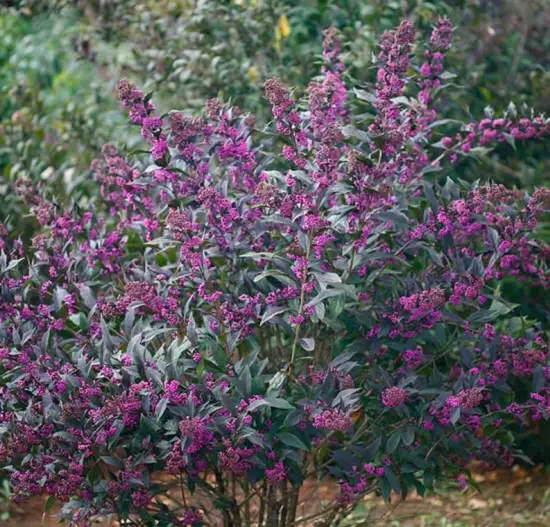
Botanical Name: Callicarpa
USDA Zone: 6-8
A deciduous shrub famous for its bright and clustered berries, it is also commonly known as American Beautyberry and American Mulberry and is one of the best shrubs for shade. The Berries have small, lavender, pink, lilac-like flowers. The foliage turns into attractive yellow in the fall. Beauty Berrys prefer at least an inch of rain or equivalent watering once a week.
Check out our article on growing mulberry in containers here!
8. Bush Anemone
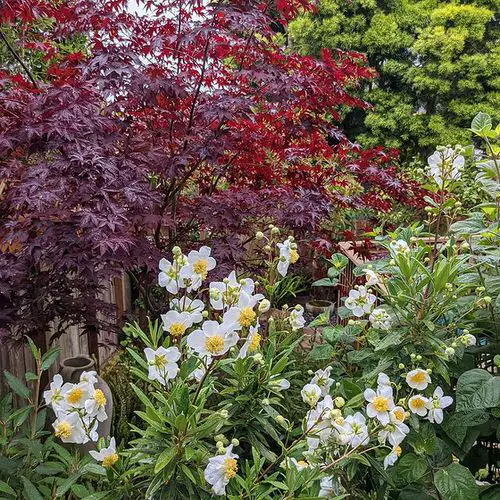
Botanical Name: Carpentia califromica
USDA Zone: 9-10
An evergreen shrub from the Hydrangea family is a rare species and a California native. The shrub is dense, clean, and evergreen–bearing white fragrant flowers from May to August. Anemones are showy and can stand alone as a focal point in any landscape, and the white flowers can lighten up any shady corner of your garden.
9. Dogwood

Botanical Name: Cornus florida
USDA Zone: 4-9
A native of the eastern half of the United States, these shrub flowers, from white to pink in color, in early springs. They form a cluster of tiny, white flowers with contrasting foliage. Most dogwoods need supplement watering during summers and falls.
10. Mountain Witch-Alder
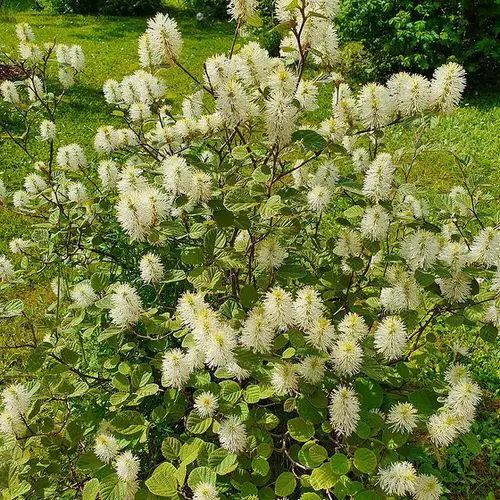
Botanical Name: Fothergilla major
USDA Zone: 5-9
Fothergilla is a slow-growing shrub, perfect for mixed borders and hedges. It flowers abundantly in springs, summers, and fall. To get optimum growth, make sure to grow this shrub in well-drained and acidic soil in partial sun. The plant also requires minimum care, as it is pest resistant and disease-free.
11. California Flannel Bush
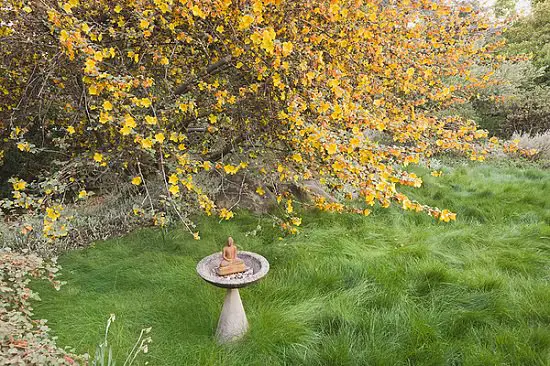
Botanical Name: Fremontodendron californicum
USDA Zone: 8-10
Native to California, it is a fast-growing evergreen shrub, great for mixed borders and rock gardens. The flannel-like leaves abundantly grow with large yellow blossoms in the spring, and cold weather makes them stay longer.
12. Carolina Allspice
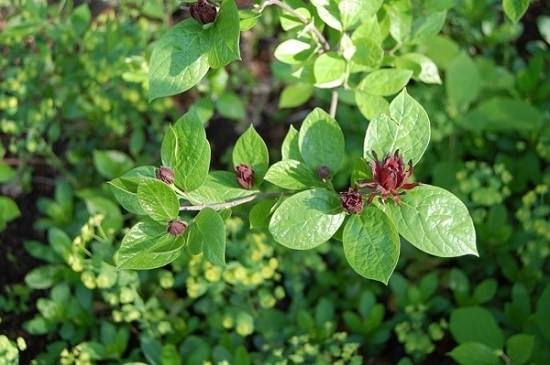
Botanical Name: Calycanthus floridus
USDA Zone: 5-9
Carolina allspice is a deciduous shrub, producing a fruit-like fragrance of the rusty brown flowers in mid-spring. The foliage is also fragrant when crushed. Both the flower and the foliage are used in potpourris. Some cultivators have yellow flowers as well.
13. Chinese Fringe Flower
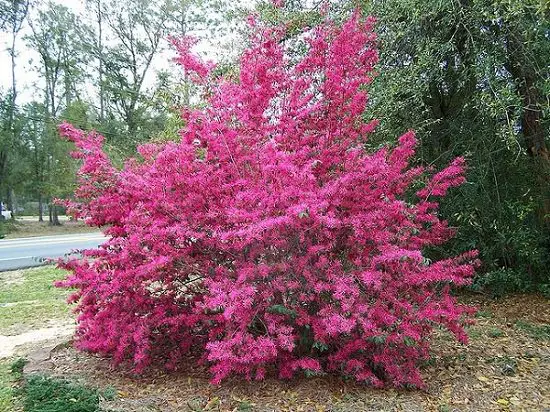
Botanical Name: Loropetalum chinense
USDA Zone: 7-9
Loropetalum becomes deciduous in the northern parts of its range. It can grow up to 4-5 feet and has lush green foliage and is full of hazel-like flowers. This shrub flowers throughout the year, making it an exciting landscape plant.
14. Elderberry
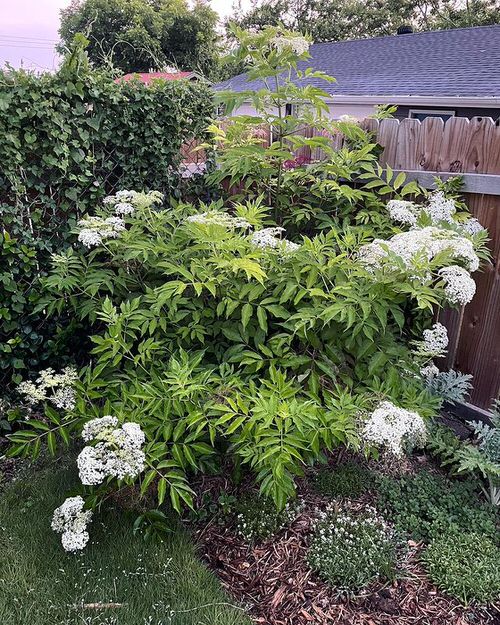
Botanical Name: Sambucus spp.
USDA Zone: 3-10
Elderberry is a deciduous shrub from the honeysuckle family with snowy white flowers and small berries, attracting a lot of butterflies and bees. It can grow up to 5-10 feet tall, and you can prune the plant minimally to give it a good shape. It requires moderate fertilizer with well-drained soil.
15. Gold Dust
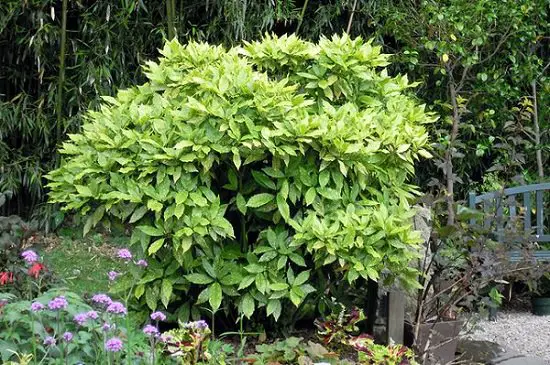
Botanical Name: Aucuba japonica “Vaiegata”
USDA Zone: 7-9
Gold dust is a slow-growing, evergreen shrub that forms 3 to 8-inch green leaves with a splash of yellow-gold spots. The plant has male and female varieties and produces a cluster of tiny purple flowers in spring. It requires semi to full shade, as the ornament leaves can get scorched in full sunlight. Prune the stems back in springs to keep the plant manageable.
Note: It is an excellent choice for hedging and container gardening with poor maintenance, but it may go leggy with time.
16. Canadian Bunchberry
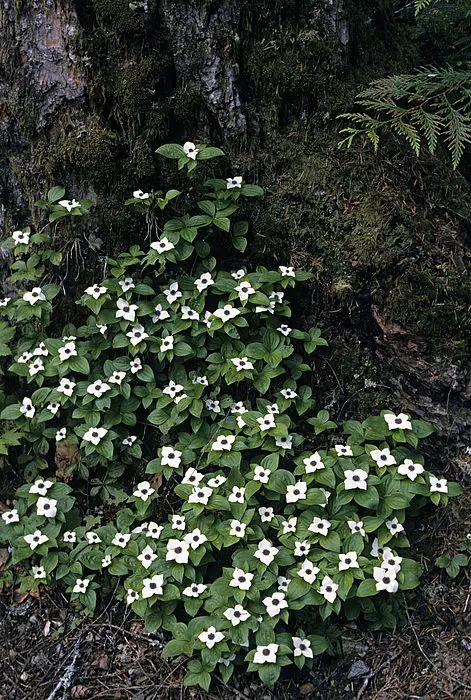
Botanical Name: Cornus canadensis
USDA Zone: 2-7
Canadian bunchberry is endemic to Eastern Asia and comes from the dogwood family. It grows oval-shaped leaves with white-green dogwood flowers. It is best suited as ground cover in cold, wet areas. Mulch the plant with peat moss to provide the acidity it requires.
17. Paperbush Plant
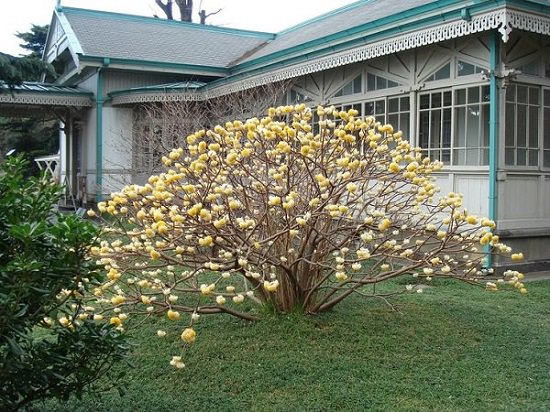
Botanical Name: Edgeworthia chrysantha
USDA Zone: 7-9
Paperbush is a deciduous shrub with dark green and leathery leaves, producing yellow and fragrant flowers. Its strands glow at night, making it look like it is covered with hundreds of silver flowers.
18. Russian Arborvitae

Botanical Name: Microbicta decussate
USDA Zone: 3-7
It is commonly known as Siberian Cypress or Russian Arboviate. It has soft and evergreen foliage with a feathery texture. It is widely used as a ground cover and requires zero maintenance. The plant’s needles are cheerfully green and bright during the growing season. They change their color from dark green to mahogany in the winter. This shrub is tolerant and grows in many different soils.
19. Sumac

Botanical Name: Rhus copallina
USDA Zone: 2-9
Also known as the dwarf sumac, flame leaf sumac, and shiny sumac is a deciduous shrub that produces spirally arranged, ornamental golden-yellow foliage in summers. It is easy to grow in the shade, with a well-drained, light, and loamy soil.
20. Summersweet Plant

Botanical Name: Clethra ainfolia
USDA Zone: 3-9
Also known as the Pepper Bush, it features spikes of white spicy-smelling flowers. This shade-loving shrub flowers from July to August, and the attractive green foliage turns into orange-yellow during fall. Summersweet is commonly used for group planting in borders and is an excellent attraction for pollinators, bees, and hummingbirds. It grows best in moist to wet soil.
21. Violet Churcu
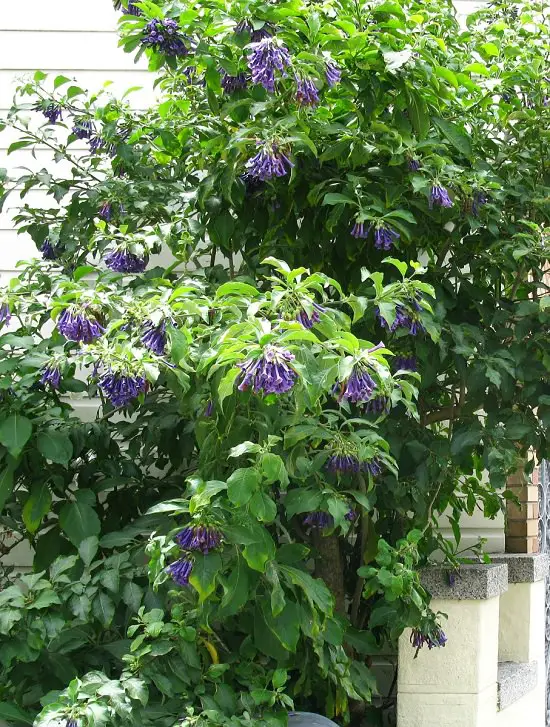
Botanical Name: Iochroma cyaneum
USDA Zone: 9-10
The trumpet-shaped, violet flowers are called Mini Brugs due to their close resemblance to Brugmansias. In the early fall season, the plant blossoms with umbel-like, deep purple dangling clusters attract Humming Birds. This shrub is fast-growing; hence, it needs to be pruned regularly.
22. Virginia Sweetspire
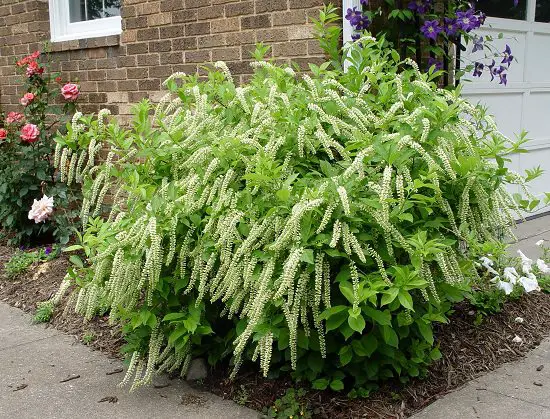
Botanical Name: Itea virginica
USDA Zone: 6-9
Virginia sweetspire is a deciduous, easy-to-grow shrub, producing a cluster of drooping bottlebrushes like fragrant flowers in springs. The foliage turns into brilliant red to purple and mahogany color in fall. This shrub attracts butterflies and birds to your garden. It is one of the best shrubs for shade to adorn your garden!
Tip: Prune any dead wood you find in your plant regularly.
23. Heucherella

Botanical Name: Heucherella
USDA Zone: 4-9
It produces beautiful, finely cut golden leaves with a brick-red center and golden veins. The beauty of the shrub is more prominent when sited in the morning sun. It grows mellow to emerald green leaves in summers and retains a solid purple color in the center. The foliage is evergreen and preferred not to be trimmed in the falls. Heucherella needs well-drained, rich soil with a neutral pH.
24. Checkerberry
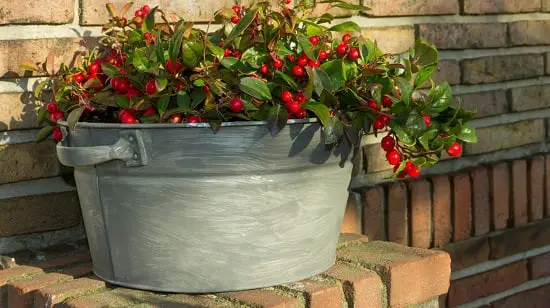
Botanical Name: Gaultheria procumbens
USDA Zone: 3-8
Also known as American wintergreen, its foliage releases a mint-like scent, and red berries have the taste of wintergreen gum. You can grow them as a ground cover in acidic soil. Maintain the plant’s shape by pruning it in winter or early spring.
25. Tree Peony
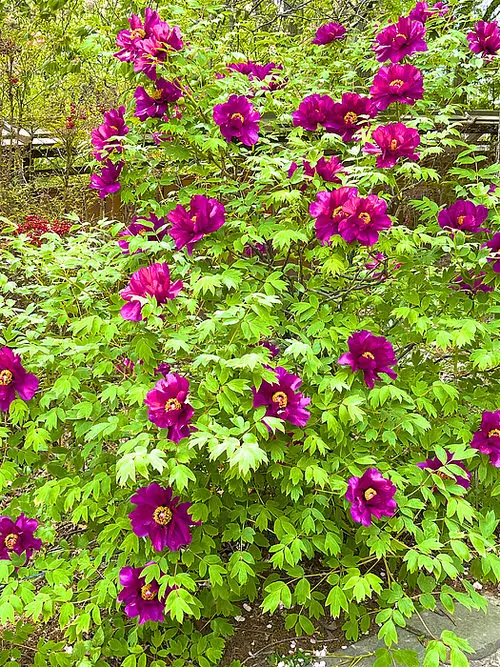
Botanical Name: Paeonia suffruticosa
USDA Zone: 4-8
The tree peony is a deciduous sub-shrub, flowering from mid-late spring and producing large, beautiful flowers in different colors. You can grow them on borders or as a hedge plant. Avoid overwatering and follow a moderate watering schedule for satisfactory growth.
26. Diabolo Ninebark

Botanical Name: Physocarpus ‘Monlo’ opulifolius
USDA Zone: 3-7
Diabolo Ninebark is a multi-stemmed, upright shrub known for its stunning and appealing form with purple, maple-like leaves. It’s showy white, cup-shaped flowers attract birds, bees, and butterflies. It grows best in acidic soil.
27. Daphne ‘Perfume Princess’
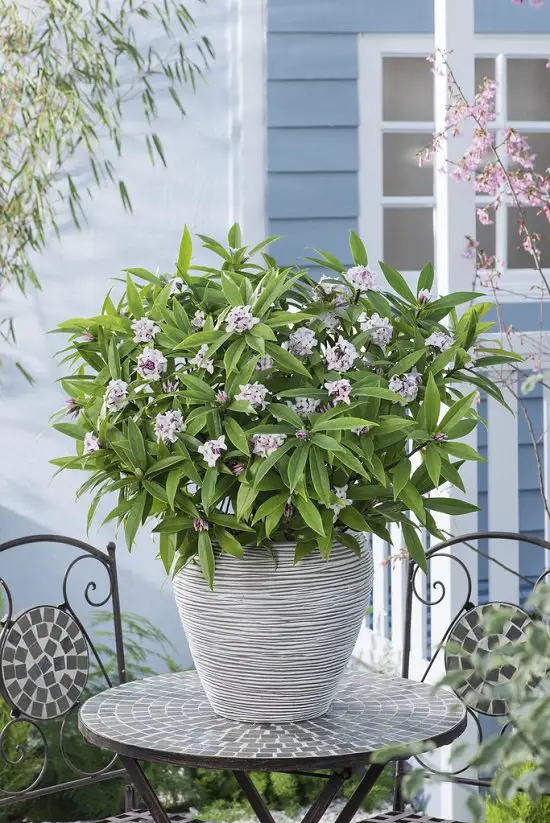
Botanical Name: Daphne ordora x bholua
USDA Zone: 7
This new variety has taken the gardening world by storm with its heady fragrance. Hence, they are named Perfume Princess. The plant survives in the sun, partial shade, and flowers in early spring. The foliage is evergreen throughout the year and survives well under partial shade.
28. Fatsia Japonica ‘Variegata’ Camouflage
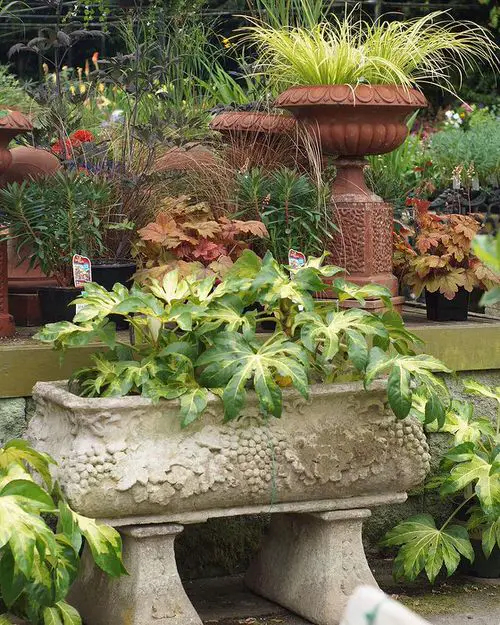
Botanical Name: Fatsia Japonica
USDA Zone: 7-10
This large evergreen shrub features large palmate leaves that are uniquely textured and variegated. Fatsia usually has flowers in the fall with bright white blossoms. Pruning once a year maintains a bushy growth of the shrub. The shrub needs enough watering to keep the soil moist.
29. Distylium Emerald Height
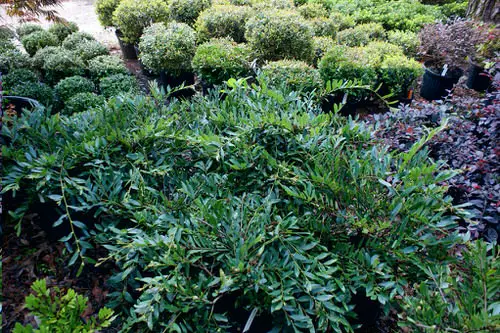
Botanical Name: Distylium
USDA Zone: 6-9
This hybrid variety maintains a glossy light green foliage all year round and grows small red-maroon flowers in late winter to early spring. It is poor maintenance and requires well-drained soil.
30. Coprosma Pacific Sunrise
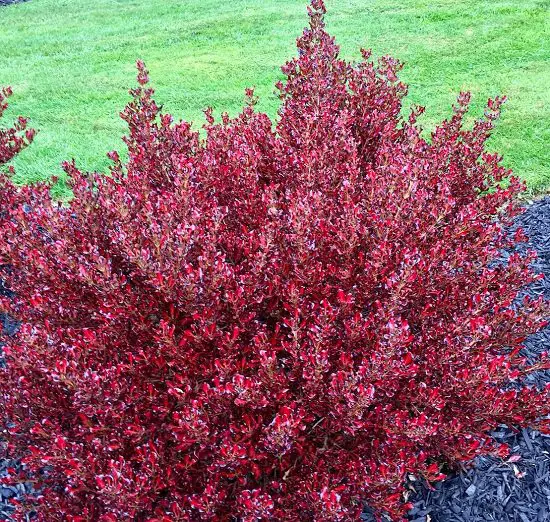
Botanical Name: Coprosma repens pacific sunrise
USDA Zone: 9
This striking, evergreen shrub is known for its rich chocolate brown foliage with pink highlights; it has become a recent favorite of gardeners. Its color becomes more intense in the Fall and Spring. Annual pruning of the shrub makes its growth bushier and dense.
31. Hydrangea Paniculata ‘Limelight’

Botanical Name: Hydrangea Paniculata
USDA ZONE: 3-8
Native to China and Japan, the pale-lime flowers of Hydrangea revive your garden with their color. These shrubs continue to flower till fall until the flower gradually turns into a rich pink color. This shrub is partial shade-loving and needs well-drained soil.
32. Mountain Laurel
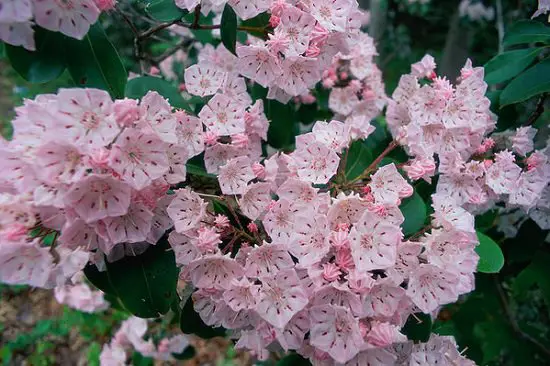
Botanical Name: Kalmia latifolia
USDA Zone: 5-9
Mountain laurel is found in lush grasslands of eastern North America; its natural territory is in woodland areas. This shrub produces shiny evergreen leaves and an ornamental bunch of flowers in rose, pink, and white shades with purple marks during late springs. It prefers to grow under well-drained, rich, acidic soil in partial shade.
33. Japanese Rose
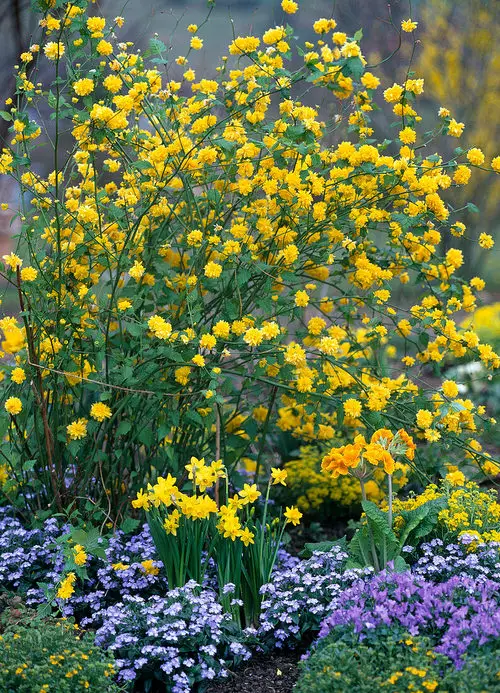
Botanical Name: Kerria japonica
USDA Zone: 4-9
Also known as Japanese marigold bush or miracle marigold bush, it is native to China, Korea, and Japan. It flowers multiple times in the partial shade in the green-yellow shade during winter. This shrub can survive well in shades in loamy soil.
Tip: Prune the overgrown shrubs by trimming them in fall.
34. Emerald and Gold Euonymus
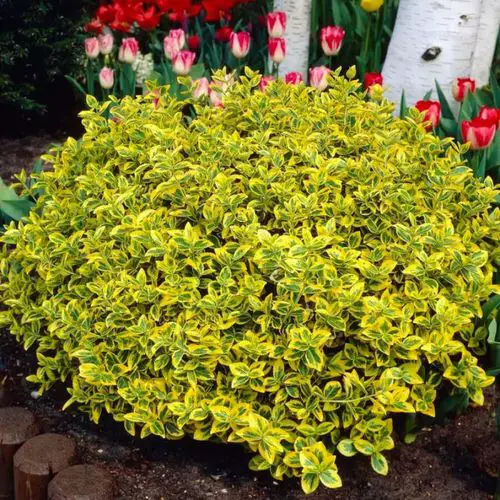
Botanical Name: Euonymus fortunei
USDA Zone: 5-8
Emerald and Gold Euonymus (Wintercreeper) is an evergreen shrub that belongs to China and Korea. It has green-gold colored leaves in an oval to the elliptical shape and forms small green flowers in early summer. Grow this plant in well-drained soil under full shade, as a ground cover, an edging plant, or as a low hedge.
35. Hetz Japanese Holly

Botanical Name: Ilex crenata ‘Hetzii’
USDA Zone: 5-8
Hetz Japanese holly forms thick glossy leaves smaller than American and English hollies; it produces black color berries, unlike red berries on other holly plants, and survives well under shade in well-draining soil.
36. Sky Pencil Holly
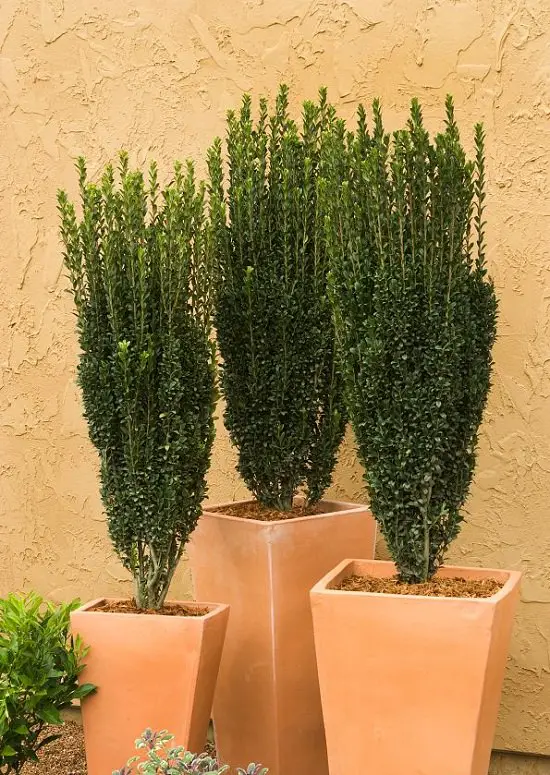
Botanical Name: Ilex crenata
USDA Zone: 5-8
Sky Pencil holly features a columnar, tall shape with edged-smooth leaves that give corners and small spaces an architectural look. It does not need much pruning like other hollies, but if you want to trim, do that in winter when the plant is dormant. This variety of Japanese holly also produces blackberries that lure birds into the garden.
Tip: Grow this shade-tolerant shrub in well-draining acidic soil.
37. African Scurf Pea
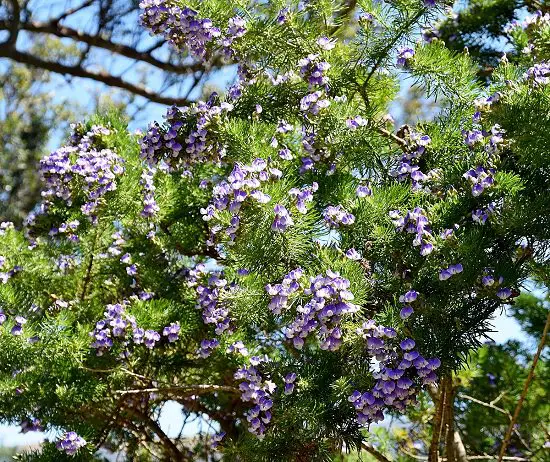
Botanical Name: Psoralea pinnata
USDA Zone: 9-12
African scurf pea is a short-living, medium-size shrub that can be planted along walkways. It produces fragrant lilac-blue pea-like flowers and dark green fine-textured foliage resembling rosemary. Grow this plant in well-drained, moist soil.
38. Serviceberry
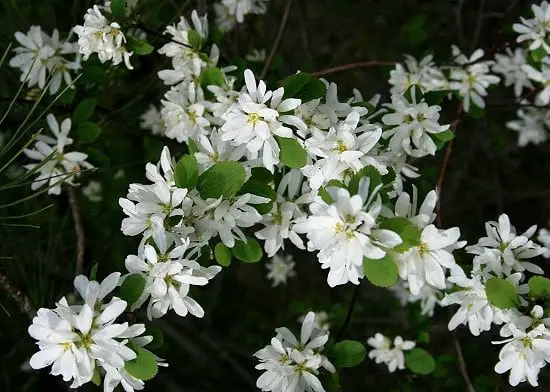
Botanical Name: Amelanchier alnifolia
USDA Zone: 4-9
Native to the northern hemisphere, alder-leaved serviceberry belongs to the Rosaceae family. It produces edible purple-blue fruit and a cluster of white flowers during spring. Serviceberry can do well in partial shade in moist, well-draining soil.
39. Alpine Currant
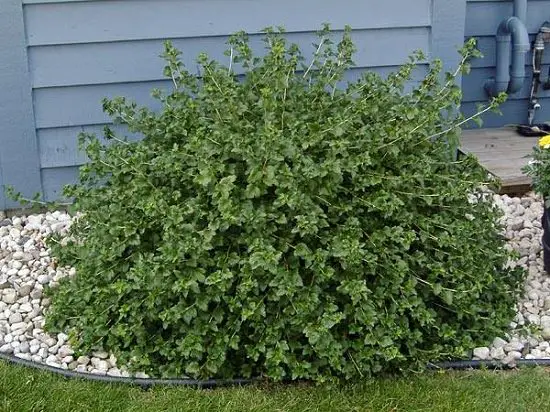
Botanical Name: Ribes Alpinum
USDA Zone: 2-7
Alpine currant is commonly found in the grasslands of European countries. These shade-tolerant shrubs produce ornamental berries and bright green foliage. Grow it on borders and hedges of your garden under full shade. You can prune it at any time of the year to maintain its shape.
40. Aucuba

Botanical Name: Aucuba japonica
USDA Zone: 7-9
Grow aucuba shrubs in rich, organic, well-drained soil in full to partial shade. Also known as spotted laurel, this evergreen shrub features colorful glossy foliage, producing small flowers in early springs. You can also enjoy red berries in fall–if you have both male and female plants.
41. California Sweetshrub
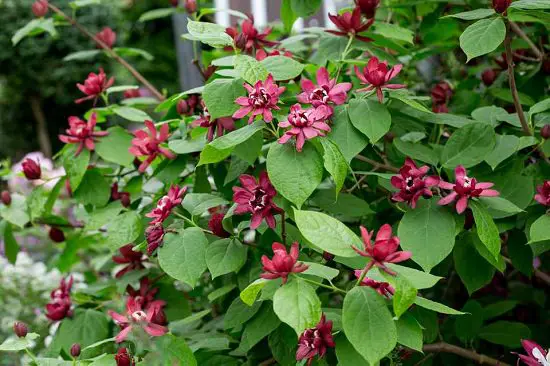
Botanical Name: Calycanthus Occidentalis
USDA Zone: 6-9
California Sweetshrub is a deciduous shrub with its origins in North America. These shrubs feature fragrant flowers that imitate red wine in smell. It can thrive well in both full shades in moist soil. You can grow this shrub to create a barrier for deers as they avoid this plant.
42. Indian Bay Leaf
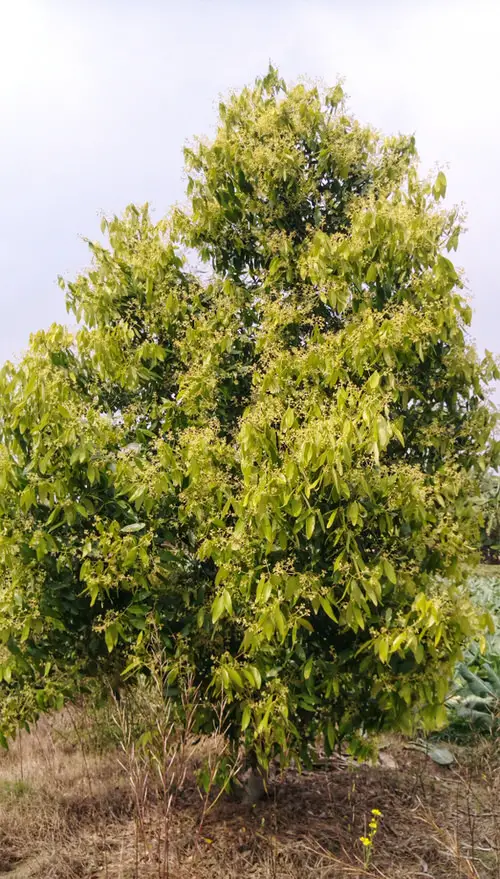
Botanical Name: Cinnamomum Tamala
USDA Zone: 11
They are also known as Tejpatta or Indian bark, native to India, Bangladesh, and Nepal. The leaves of this aromatic plant have several culinary and medicinal uses, as they have a peppery taste and clove-like smell. Grow the plant under full sunlight and protect it from frost and cold winds. Also, you can grow it in the container and control the height by regular pruning.
43. Red Flag Bush
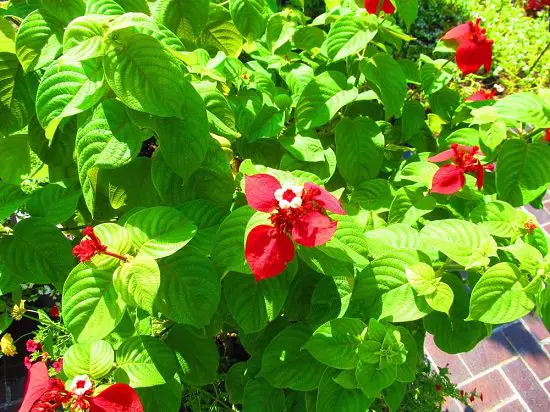
Botanical Name: Mussaenda erythrophylla
USDA Zones: 10 and above
Commonly known as tropical dogwood, Ashanti blood or Red flag bush is a West African shrub. It can grow up to 30 feet, but you can keep it compact by regular pruning. The leaves of this shrub grow in many colors of white, red, and pale pink; it produces small star-shaped flowers of 10mm (0.39) in diameter. You can grow this shrub in porous soil under partial shade on hedges and as a screening plant.
44. Crown of Thorns
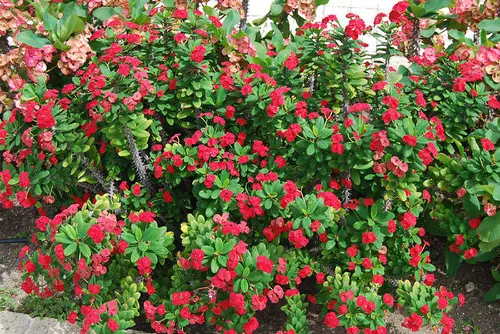
Botanical Name: Euphorbia milii
USDA Zone: 5
Euphorbia (Spurge) is an easy-to-grow shrub from the Euphorbiaceae family. It is one of the largest genera of flowering plants, perennials, and herbaceous shrubs. You can grow shrubs like poinsettia, and pascuita (E.leucocephala)
Also, you can plant scarlet plume (E.fulgens) that can grow up to 3 feet (90 cms) tall with scarlet bracts and slender stem. Grow this shrub in well-drained soil under full sunlight. They are ideal for borders, garden beds, and rock gardens.
Note: The milky sap of euphorbia is toxic and can cause skin irritation, so handle it with care.
45. Goatsbeard
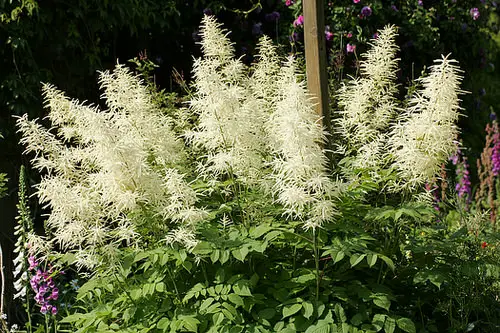
Botanical Name: Aruncus dioicus
If you don’t have a well-lit garden, this plant is the best. It won’t mind dwelling in the shade for long as long as it gets a bit of indirect light for a few hours.
46. Ferns
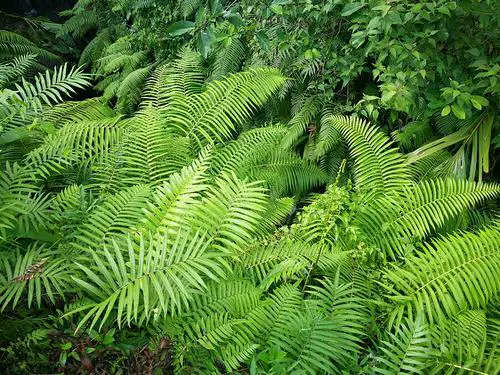
Botanical Name: Tracheophyta
You can never go wrong while growing ferns in the shade with many types to choose from. They are easy to maintain and look stunning! Some of the best ferns are listed here.


